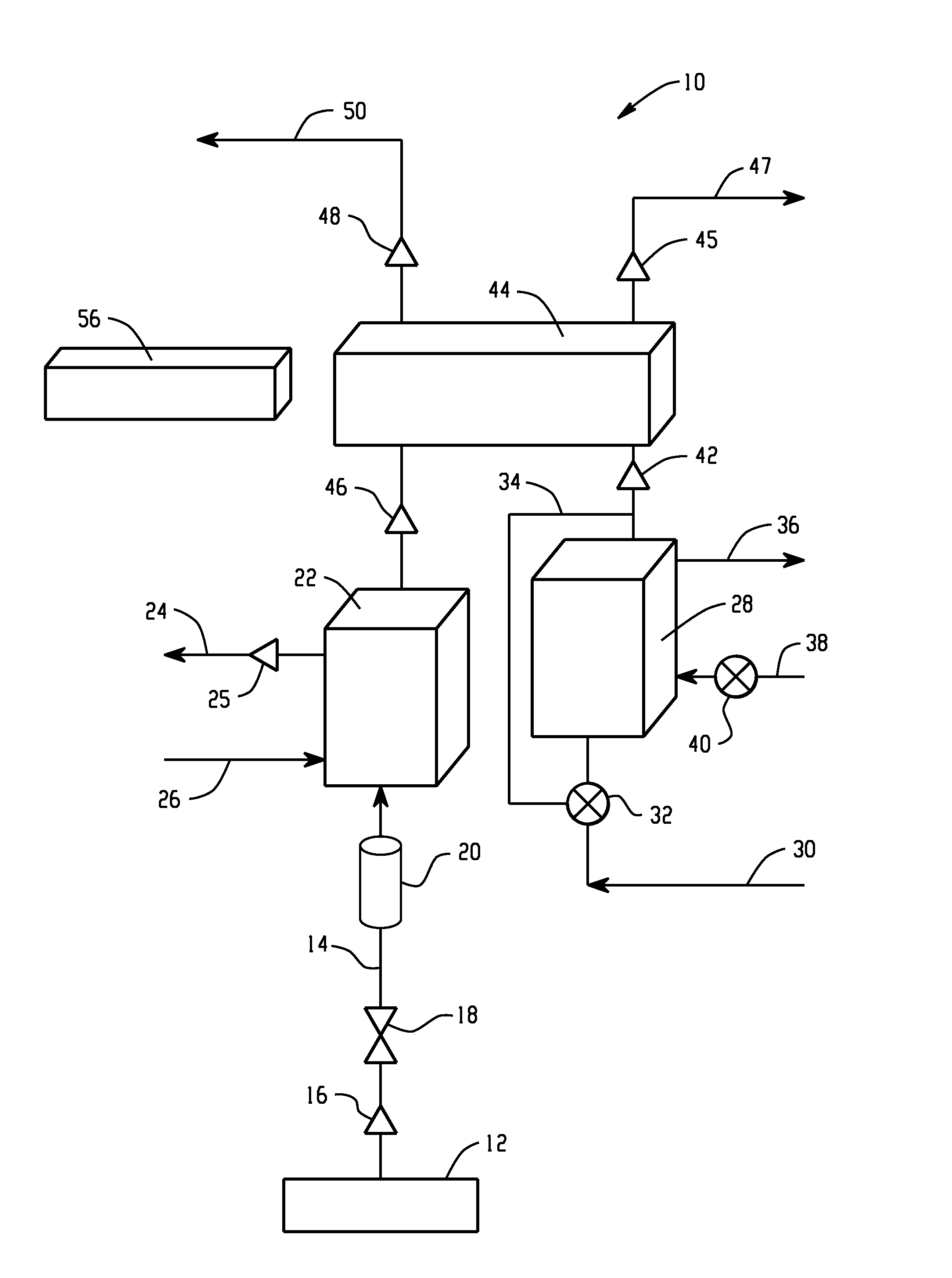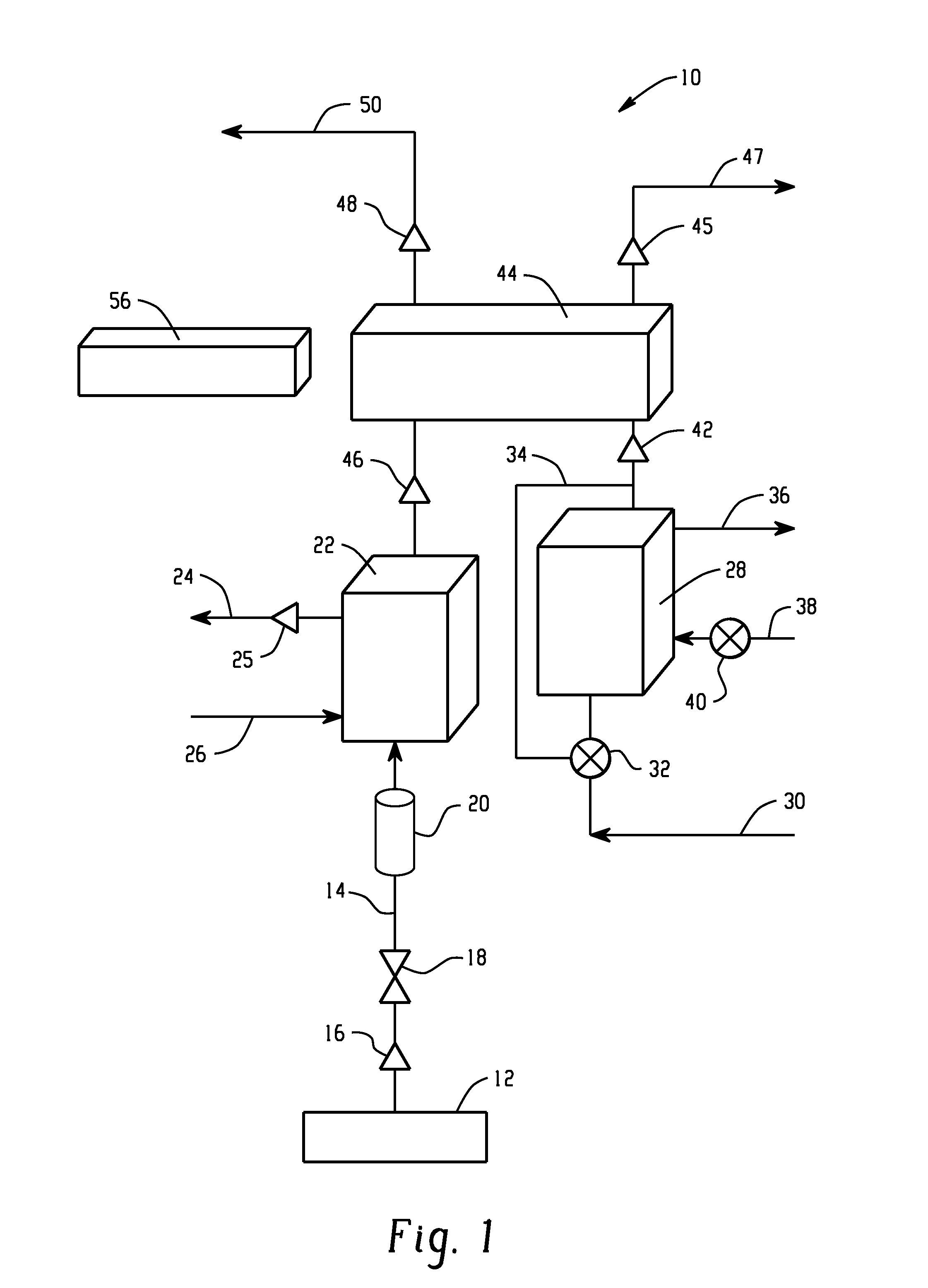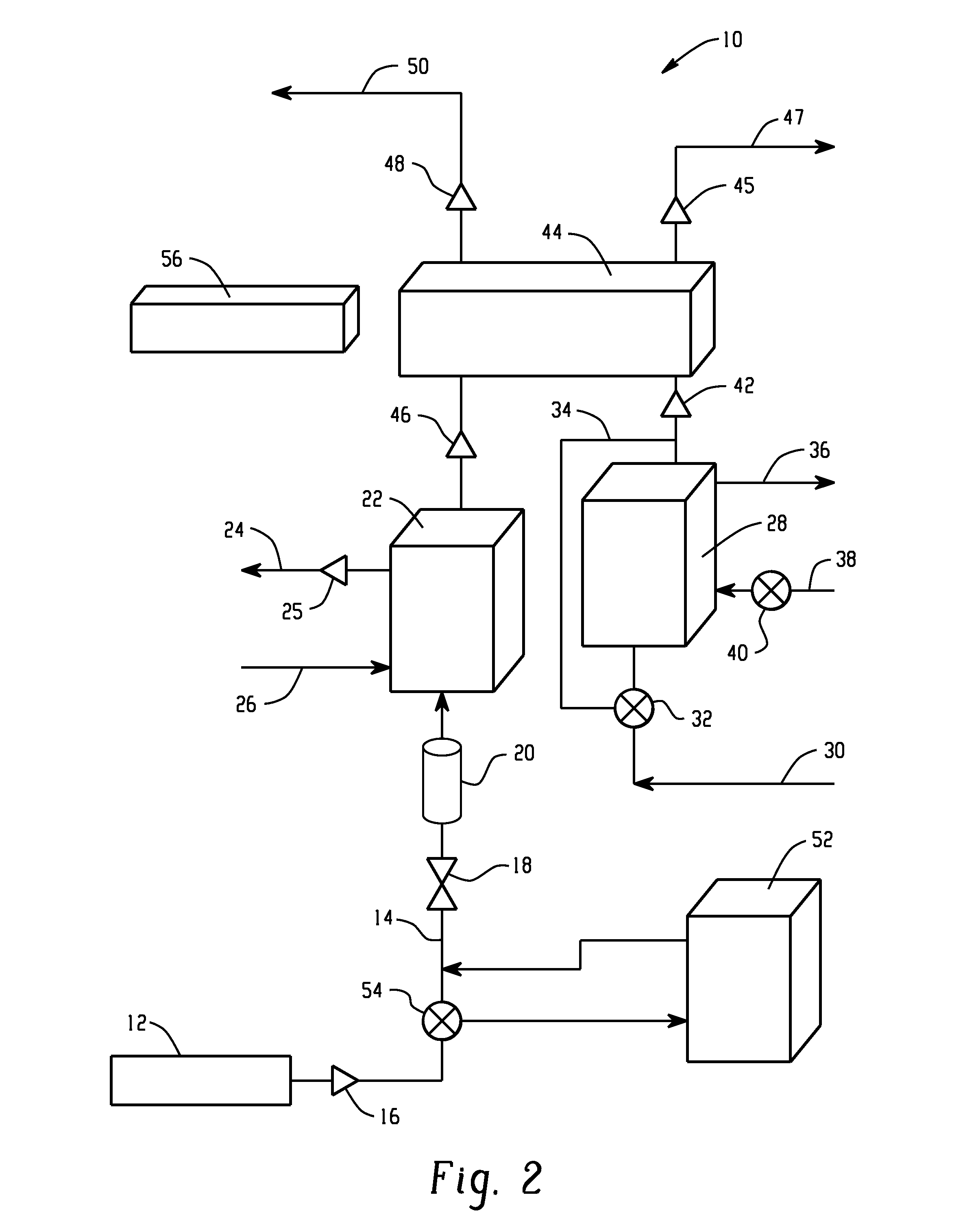Fuel and thermal management system
a technology of thermal management system and fuel, which is applied in the direction of combustion air/fuel air treatment, turbine/propulsion fuel heating, instruments, etc., can solve the problems of preventing the proper operation of components, and affecting the performance of aircra
- Summary
- Abstract
- Description
- Claims
- Application Information
AI Technical Summary
Benefits of technology
Problems solved by technology
Method used
Image
Examples
Embodiment Construction
[0010]With reference to the Figures, FIGS. 1 and 2 schematically depict exemplary systems of the invention. As shown in FIGS. 1 and 2, exemplary fuel and thermal management systems 10 are shown with fuel tank 12 providing fuel through fuel line 14 having temperature sensor 16 and oxygen sensor 18 for measuring dissolved oxygen levels in the fuel. A flow meter 20 measures fuel flow rate of fuel entering the system 10. Fuel is delivered to optional heat exchanger 22, which transfers heat to the fuel from lubricating oil circulated to an electrical generator (not shown) through oil lines 24, 26 having oil temperature sensor 25, thus raising the temperature of the fuel. Optional heat exchanger 22 has separate sections in thermal communication with one another, with one of the sections accommodating oil circulating to the generator and another section accommodating fuel.
[0011]Lubricating oil from an engine (not shown) is circulated to a first heat exchanger 28 through oil inlet line 30 h...
PUM
 Login to View More
Login to View More Abstract
Description
Claims
Application Information
 Login to View More
Login to View More - R&D
- Intellectual Property
- Life Sciences
- Materials
- Tech Scout
- Unparalleled Data Quality
- Higher Quality Content
- 60% Fewer Hallucinations
Browse by: Latest US Patents, China's latest patents, Technical Efficacy Thesaurus, Application Domain, Technology Topic, Popular Technical Reports.
© 2025 PatSnap. All rights reserved.Legal|Privacy policy|Modern Slavery Act Transparency Statement|Sitemap|About US| Contact US: help@patsnap.com



